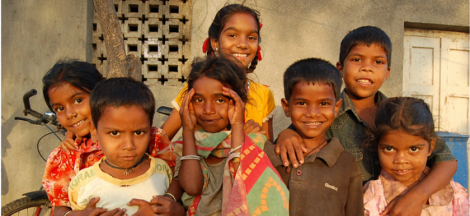 By Anjan Roy
By Anjan Roy
A sense of foreboding has taken hold of the Central Asian countries. Tajikistan, Uzbekistan, Kazakhstan were all part of the Soviet Union for close to seventy years until USSR crumbled.
The Marxist ideologies of the Soviet days had at least kept at bay the traditional religious bigotry in Central Asia. They have, by and large, evolved without much of religious strife.
The rise and lightening success of the Taliban, particularly its swift capture of Kabul, has apparently unnerved ordinary peoples of these countries. What they are most scared of is that the “Taliban Ideology” will now spread to the neighbouring countries.
“Tajik Children of War in Afghanistan” are a major concern, observed Sirojiddin Tolibov, who has spent 20 years with the BBC World Service’s Central Asian unit as a reporter, manager, news anchor, and editor. These originally are Tajik religious fundamentalists who fought alongside the Taliban decades back.
Now their progenies and the older fighters have almost settled down in Afghanistan but still retain their original ethnicity. They dream of returning to Tajikistan one day and spread their ideology.
Tolibov, as his name suggests, would have lived and grown up in Soviet era. Participating in the seminar “Ground Reality: Local Views on Taliban’s Return”, he said the fear is that young people might be indoctrinated. In the border areas of Tajikistan, ordinary folks are intimidated when they see characters dressed and appearing like the Talibans with beard and those loose dresses.
Deobandi, Salafi, Wahabi views are rife among the elements. In a chilling incident a few years back, when the dreaded ISIS was holding sway over large swathes of Iraq, a military commander of the level as high as a colonel, had defected and joined the outfit as a minister for war.
The background to this nervousness lies in the dogged fights in the valleys, mountains, farmlands of Afghanistan against foreign occupiers for well over thirty years in a land which has even ordinarily little rule of law. These fights have given birth to generations who are the “Children of War”. They are predominantly locals, often from neighbouring countries, from far afield and have turned vicious over the years.
It is this powder keg that might catch the Taliban spark. Of these countries, Tajikistan is at highest risk, having a long border of 1357 kms, often porous, now heavily militarised. Across the borders, the locals can hear gunfire and rumours of restive moves.
The Tajik sentiments are echoed by Melanie Sadozai, a young PH.D. candidate and educated at the Sorbonne, Paris, who believes an acceptance of a Taliban government in Afghanistan and its recognition is an acquiescence to certain ideas. That was the threat. A regime of Shariatlaw and and its spread was the big concern. The fear of the spread of these ideas is the principal worry.
Though currently working from Paris, her research is based on long-time fieldwork and focuses on cross-border activities in the remote areas of Tajikistan and Afghanistan in the Pamirs. Through an empirically oriented methodology, she challenges the widespread perception about the Southern border of Tajikistan which associates it with images of violence and danger.
Tajiks have fought the Taliban and similar elements and confined them to the other side of the river Amudarya. Tajik Facebook is fun of expression of consternation at Taliban victory. They are worried about the safety of their Tajik relatives and kins in Afghanistan.
The fragile border area economics is thrown asunder. Cross birder markets have collapsed. All of a sudden, their known world is falling apart.
The bordering countries are receiving a steady stream of refugees fleeing from Taliban. The worst fear is that of genocide of Tajiks caught up in Afghanistan who are known to be in opposition to the Taliban. No less than 400-500 people are trooping in, including former members of the Afghan military.
Among the neighbours, the Uzbeks are pragmatists and are reluctant to admit fleeing refugees as that places fresh burden as well as brings in its train uncertainties.
In the regional matrix, the Central Asian states are clinging to hopes that Taliban victory is not complete and absolute. The regional powers are still believing that the Panchsheer valley opposition to Taliban could be more effective and intimidating.
Tajiks have for long supported the Northern Alliance in its struggle against Taliban. Even now, these powers are seeking those who could be the real and effective walls of resistance to Taliban sway. But, realpolitik means they have to lie low and wait.
Of course, the intelligentsia knows that the foreign policy of Tajikistan and its neighbours are decided not in Dushanbe or the regional capitals. These are decided in consultations with Kremlin, the incumbents have to fall in line.
The regional powers are now evaluating what would be the role of the Americans, Russians and also the Chinese.
Through the current upheavals two things are emerging loud and clear: first, Central Asia was India’s backyard in historic times, just as Afghanistan was an integral part of northern India. Moghul social elites were divided in broad three classes, Turani, Durani and Hindustani, according to their origins. Of these, Turani Moghul social elites were of Central Asian origin.
But today, in the wake of the Afghan upheaval and rise of the Taliban, India has been put out of reckoning. The moves of India are minimal and India’s potential for intervention just now is nil. But India enjoys a hidden reservoir of goodwill in these Central Asian countries which can push forward India’s broad diplomatic and strategic objectives much further.
Secondly, everyone is familiar with Gresham’s Law in economics. The dynamics in Afghanistan and central Asia is showing the social and political counterparts of Gresham’s Law.
Socially, we are witnessing that bad people drive out good ones. The entry of the rag tag militants into power in Afghanistan is resulting in a huge brain drain as competent and valuable professionals are leaving by the droves.
But what is even worse and calamitous is that bad ideas drive out good ideas. The intelligentsia in Central Asian are seeing with constellation potential of Talibani retrograde ideas driving out the sane social value and norms in the wider areas. This is the biggest threat from the “Children of War” garrison. (IPA Service)




 Carrying Forward Anti-Colonial Nation Building Is Not Possible Under BJP Regime
Carrying Forward Anti-Colonial Nation Building Is Not Possible Under BJP Regime 